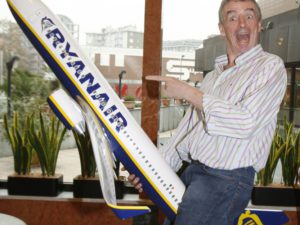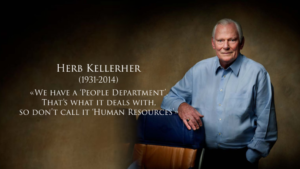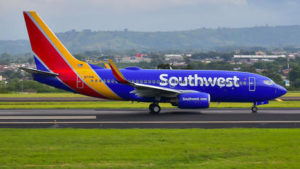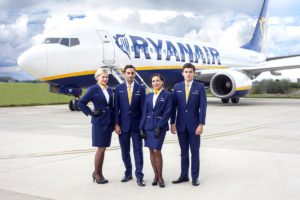A success story
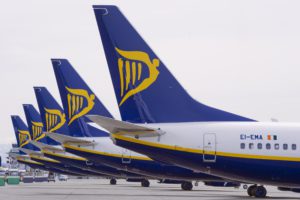 To analyze the business success of Ryanair, it is first necessary to define some key concepts that characterize the air transport sector in relation to the process mechanisms.
To analyze the business success of Ryanair, it is first necessary to define some key concepts that characterize the air transport sector in relation to the process mechanisms.
We are dealing with a business model where internal operating processes are not only characterized by a high incidence of exogenous variables (low level of predictability), but also through non-homogeneous corporate functions that are very different from each other because the background of human resources is different. In other words, in an airline, the design of the internal organization is very complex because it is necessary to harmonize human resources with very different skills: pilots, engineers, mechanics, flight attendants administrative and commercial employees. Indeed we need to find and define a nexus etiology between the organizational structure and the internal management control model.
In my opinion, the ability of Michael O’Leary and his team was to define an effective etiological link between organizational structure, internal processes and control systems. This means extending the relationship between organization and internal processes to a three-dimensional level, adapting to them an extremely effective model of control. Nowadays, the concept of Low Cost is strictly linked to thicket, but I think that in the initial intentions was not related to it, but rather to reach a level of process efficiency such as to make it as “low cost” as possible. The ticket price is only the consequence of the competitive advantage obtained by lower operating costs than competitors, not the first aim to achieve in the company strategy.
O’Leary’s insights
Over the years, the Irish company has proved to be an explosive mixture as a product of a combination of ingenious intuitions of its leader and of increasingly complex and advanced models of process control.
O’Leary went to Boeing to order hundreds of 737/800 immediately after September 11, when other companies canceled the purchase orders of the airplanes, torn by an unprecedented crisis. He therefore obtained unique and perhaps unrepeatable purchasing conditions, but how many other people had that intuition? If we add to this an exasperated process control in an environment oriented to the search for management models that allow the decision maker to operate their trade offs with a span of knowledge as wide as possible, we can certainly say that for the competitors, nowadays it is very hard to fill the competitive advantage that leads to an increasingly evident gap.
In my opinion, Ryanair is the most concrete and clear example of the “cost leadership” theory developed by the Nobel Prize winner for economics Michael Porter.
According to Porter, an enterprise to be successful has two alternative paths to follow:
- to be able to convey to the customer a sign of value in their offer that reduces the ratio coefficient between sold quantity and unit sales price;
- reach a level of efficiency in its internal process mechanisms such as to determine a operating cost lower than others, in this way it can build a sustainable competitive advantage over time.
The influence of Herb Kelleher
The great entrepreneurial intuition of the Irish manager was to understand that it was necessary to integrate the Southwest lesson on the organization / process relationship with a third element: an adequate management control system that, within complex processes and crossed by numerous exogenous variables, it is certainly the key element. Indeed, they immediately tried to make the processes as “lean” as possible. An example in this sense is the simplification of the revenue channel, limiting it to Web commerce only. As is well known Ryanair has never made agreements with travel agents or paid sales commissions, simplifying the sale to a single channel the control regard on revenue management is easier.
Unlike many analysts, I believe that the Irish company, in relation to the corporate strategy, is not fully comparable to Southwest. The core values of entrepreneurial philosophy of Herb Kelleher, American company co-founder and strategist, are not those of O ‘Leary, the only real element that unites these two cases of entrepreneurial success is the continuous search for process efficiency, but very different are the paths they both reach their goal. According to Kelleher, assuming a new resource in Southwest was a “religious experience” (cit !!) and the social dimension was the main element on which the company organization was built. The relationship with the client as well, was conceived in a very different way from O ‘Leary. The customer satisfaction for the quality of the service offered is central to the strategy of the American company, but this is not the case for the Irish company, here the concept is that the customer is already satisfied, as the last beneficiary of the efficiency that characterizes the internal processes and it translates into lower running costs of the competitors than for a part determine the profits that the company has achieved for years with a significant tendency to increase its profitability, but on the other hand to benefit the customer by allowing him to buy tickets at prices that competitors can not offer and when they try after a while are forced to surrender because they are not competitive with Ryan’s running costs.
In order to deepen the concepts mentioned above, it is necessary to focus on the aspect concerning the internal process mechanisms, that is the combination of the activities of an airline that are absolutely inhomogeneous or have very diversified characteristics. It ranges from ground handling processes to high-tech operations such as engine’s shop visit, coming across the flight operations that require pilots or resources with high skills. Each engineer as well as each pilot who works in an airline is aware of the responsibilities inherent in his work, and this is why we need a standard of uncommon preparation and training. In this scenario, Kelleher focused on the analysis of internal processes from the simplest to the most complex, and he was the first to understand that capitalize the aircraft daily operations as much as possible in order to increase productivity and thus make use of important economies of scale, as well as rethinking and reorganizing maintenance programs, oriented towards an improvement in efficiency, they were factors that would have been decisive for a sustainable competitive advantage over time. Kelleher also knew that rethinking the business model was not a simple task and would have been impossible without the involvement of what is the primary asset of an airline: human resources. It is difficult to find a typology of enterprise in which human resources both in their individuality and as part of the organized structure have a deeper impact on the levels of efficiency and effectiveness. A pilot is crucial in the processes concerning flight operations, every decision he takes drastically affects the costs of performance. It is also essential that the structure that deals with maintenance, knows the best practices in managing the maintenance of the airplane ensuring constant and efficient operations in compliance with safety rules. An aircraft on ground due to technical problems produces an exponential growing of process costs. It is therefore necessary to know well the limit between the safety of flight operations and the economic damage that a non-operating aircraft causes to an airline and, it is often not easy to define this limit.
Kelleher was the first to understand that in the aviation of the 21st century the real challenge was to make the processes as efficient and reliable as possible and that is why he exalted the internal social value in his strategy. He understood that all the employees had to feel part of a project, the project that made Southwest the company that in a few years became a benchmark for anyone involved in commercial aviation. The attention to detail became substantial in the strategy; Kelleher starting at the beginning of the 90s with few planes and with connecting flights inside Texas was able in less than a decade to write an extraordinary story of entrepreneurial success with awards and prizes everywhere and with a fleet of about 500 aircraft and thousands of connections. Everyone has looked with big admiration the evolution of an entrepreneurial path that had no precedents in aviation, where the innovation of process and product were a perfect winning combination that ensured the Texan airline a sustainable competitive advantage over time for the specificity of internal processes that were not only reflected in a significant saving on production costs, but equally important was the efficiency and the centrality of the sign of value that Southwest was able to transmit to the market. The users response was exceptional with a continuous growth of the customers and therefore of the profits that came in the first years totally employed in order to constantly increase the dimensional threshold of the enterprise and therefore to be able to make use of further economies of scale that increasingly lowered the breakeven point in what had now become a virtuous path without precedents in the civil aviation history.
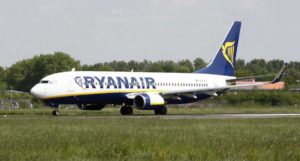
Ryanair and Southwest: two stories of entrepreneurial success compared
It is possible that O’Leary was influenced by Southwest, but in my opinion those who claim that the Irish manager built Ryanair by copying Kelleher’s strategy make a non-trivial assessment error. The orientation towards efficiency in the processes as the primary objective to be achieved is the only element that can unite the “corporate strategy” of both airlines, but, if the final goal is certainly similar, the ways in which it is achieved, for many aspects are different if not diametrically opposed and, moreover, considering the diversity of the external environment and the peculiar characteristics of the markets to which the two companies turn, it could not be otherwise. About the concept of effectiveness, both realized that in aviation a voice shared by the balance sheets of almost all the companies is excluded: the final inventories. Indeed, if we consider that the finished product is represented by the seats offered, it seems very clear that in the case they remain unsold, they can not be stored in any warehouse, so we are faced with a business model in which the offer is extinguished in the same moment it is produced, so it becomes essential to reach a load factor that minimizes the empty seats as much as possible, hence the intuition of selling low-cost tickets. A place occupied by a passenger who, having booked well in advance, paid a very low price is still better than an empty seat and money of revenue are considered a plus compared to not having any revenue.
Often, who deal with aviation use the acronym CASK which represents the average cost of the place offered per km traveled, Ryan certainly is not on the CASK that has built its strategy, there is no more dissonant index of the CASK compared to the reality of airline management. Not all kilometers are equal, indeed it is almost impossible that each kilometer is equal to the previous one or the next in relation to the performance costs and, a weighted average over the entire network operated by the company, it is only useful to move away from the real cost values. The CASK, however, is very useful for all those consulting companies that are called to collaborate with airlines to prepare their innumerable slides that have never produced a minimum result because very often far from the basic concepts of the business model.
It is not difficult to come across strategic plans that focus on the network as a primary element, but these are mere exercises of no use because in an increasingly globalized economy, finding routes that fill the airplane is not that difficult. Today we read who believes that the long haul is the market segment on which to focus, while Southwest and Ryanair are the proof of the exact opposite having built their fortune on the short medium range. The real problem is certainly not the market segment on which to orient the strategy, but rather know how to operate on the chosen routes, be they long or short-haul, with the necessary levels of efficiency, that level that allows you to keep as much as possible under control the numerous exogenous variables that, as mentioned, characterize the sector and determine the financial result.
CASK is nothing else than a consequence of all this, a relative indicator in a business context so characterized by unpredictable variables. The quality of human resources involved in the organization is the main item for efficiently managing internal process mechanisms. The construction of sophisticated management control models are a key element of modern aviation to compete within a market that presents some players who continually innovate their processes in order to improve their economic size, with reference to the costs that the airline must struggle and the industrial dimension, referred to the ensuing events that make up the internal process mechanism.
Kelleher and O’Leary understood more than others that building a success story in aviation means developing as far as possible, the efficiency principle so dear to Porter, everything else is just rhetorical and theoretical exercise and it is no coincidence that many their investments have focused on process innovation. An excellent market positioning is only a logical consequence of the level of efficiency achieved. It is then only necessary to know how to communicate to potential consumers that certainly exist and they are waiting to see bridged their need to have an air link between the areas of their interest.
Ryanair and the social dimension
Certainly O’Leary has been able to build a high-level process mechanism, but there is an element in this almost perfect construction that is causing some problems in the social dimension of the company. And it is not a coincidence that the very importance and care of the social dimension of the company is the element that more than any other differentiates O’Leary’s strategy from Kelleher,
O’Leary in his successful strategy has never wanted to realize that air transport workers can not be considered mere numbers and I’m not just referring to the dignity of the worker which must be guaranteed in any business sector. In aviation the worker is a subject with special meanings that only those fake experts describing a pilot as a driver or a flight attendant as a high-altitude waiter who enjoy unjustified privileges, are not able to understand. These people have nothing to do with air transport and it is certainly not the case of O’Leary who has shown himself to be one of the greatest managers of modern aviation. Being a commercial pilot of a multi-ton airplane taking off with so many people on board is not a job for everyone and only a person who is not honest intellectually can say otherwise. Man is not born to fly, so flying means to live an exceptional moment, that is, outside the natural habitat of each person. Pilots, flight attendants, engineers, maintenance and line technicians perfectly know their task contributing to a performance called flight is something unconventional for human nature. So to describe a pilot as a driver or a flight attendant as a high-altitude waiter is just a way to show ignorance about the internal process mechanisms of a company whose output is to transport humans from one point to another in the planet at a supra-human speed and altitude. In this context, human error can have catastrophic consequences because it is so difficult to survive an airplane crash and the professionalism and the high level of training contributes significantly to the infinitesimal percentage of air crashes. This is fundamental for the existence of commercial aviation. If ever there were only 5% of crashes on the number of flights made in a year worldwide, it would mean the death of millions of people and consequently the end of the aircraft intended as a conventional transport system.
Inside airplanes a very high rate of technology has to be managed and this requires the players really skilled within airline organizational structure to avoid catastrophes caused by an air crash.
O’Leary, in his extraordinary genius, probably thought that his advanced control systems could make marginal the level of workers’ performance increasing his bargaining power towards them. According to O’Leary’s strategic vision in relation to internal process mechanisms, employees have always been considered a matriculation number assigned to performe activities as repetitive and standardized as possible to achieve higher levels of efficiency. This obsessive pursuit of efficiency combined with an exasperated strategy to decentralize the individual to the margins of the company, is proving to be a boomerang for the Irish manager struggling with most difficult challenges in recomposing a social dimension fair and credible within Ryanair. It will be necessary to recall the extraordinary lesson of Kelleher for whom the individual is the central hub of the company and welfare hast to be be an important factor leading the entrepreneurial choices of the manager who wants to make his business a cluster of sustainable activities and processes cover time.

